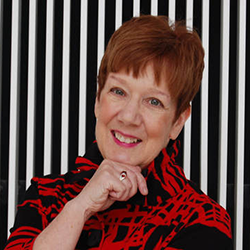CIERA 15th Annual Public Lecture by Marcia Bartusiak

When:
Wednesday, October 5, 2022
5:30 PM - 7:00 PM CT
Where: Cahn Auditorium, 600 Emerson Street, Evanston, IL 60208 map it
Audience: Faculty/Staff - Student - Public - Post Docs/Docs - Graduate Students
Cost: Free and open to the public.
Contact:
CIERA Astrophysics
(847) 491-8646
CIERA@northwestern.edu
Group: CIERA - Annual Public Lecture Series
Category: Lectures & Meetings
Description:
Northwestern University's Center for Interdisciplinary Exploration and Research in Astrophysics (CIERA) Presents: THE CIERA 15th ANNUAL PUBLIC LECTURE
-- Free and open to the public.
-- All are welcome! Content tailored to a general audience.
-- Meet Northwestern astronomers after the lecture.
-- Campus parking lots are free and unrestricted in the evenings.
Marcia Bartusiak
Talk Title: The Day We Found the Universe: A Centenary Celebration
About this Talk:
In October 1923, one hundred years ago, Edwin Hubble took a historic astronomical photograph that ultimately established that our universe was filled with myriad galaxies just like our own. It was a realization that reshaped how humans understood their place in the cosmos. Six years later, continuing research by Hubble and others forced Albert Einstein to renounce his own cosmic model and finally accept the astonishing fact that the universe was not at rest but instead expanding. The story of these discoveries includes battles of will, clever insights, and wrong turns made by the early investigators in this great twentieth-century pursuit, from the luminaries (Einstein, Hubble, Harlow Shapley) to the lesser known (such as Henrietta Leavitt, who discovered the means to measure the vast dimensions of the cosmos, and Vesto Slipher, the first and unheralded discoverer of the universe’s expansion). Award-winning science author, and Professor of the Practice Emeritus, Marcia Bartusiak will recount these watershed moments in our cosmic history, describing how Hubble’s triumph was not his alone but was achieved by his standing on the shoulders of many before him.
About the Presenter:
Combining her skills as a journalist with an advanced degree in physics, Marcia Bartusiak (pronounced Mar-sha Bar-too'-shack) has been covering the fields of astronomy and physics for four decades. The author of seven books, she is Professor of the Practice Emeritus in the Graduate Program in Science Writing at the Massachusetts Institute of Technology. Some of her books include The Day We Found the Universe, a narrative saga of the birth of modern cosmology and the 2010 winner of the History of Science Society's Davis Prize, Dispatches from Planet 3, an essay collection for the armchair astronomer, and now-updated Einstein's Unfinished Symphony, her award-winning history of gravitational-wave astronomy and its first detections.
For many years, Marcia was a contributing editor at Discover. she is now on the editorial advisory board of Astronomy magazine. She also reviews science books for The Washington Post and Wall Street Journal.
The Lecture is made possible with support from The Alumnae of Northwestern University
To receive updates about this and other CIERA Events, please subscribe to our e-mail list.